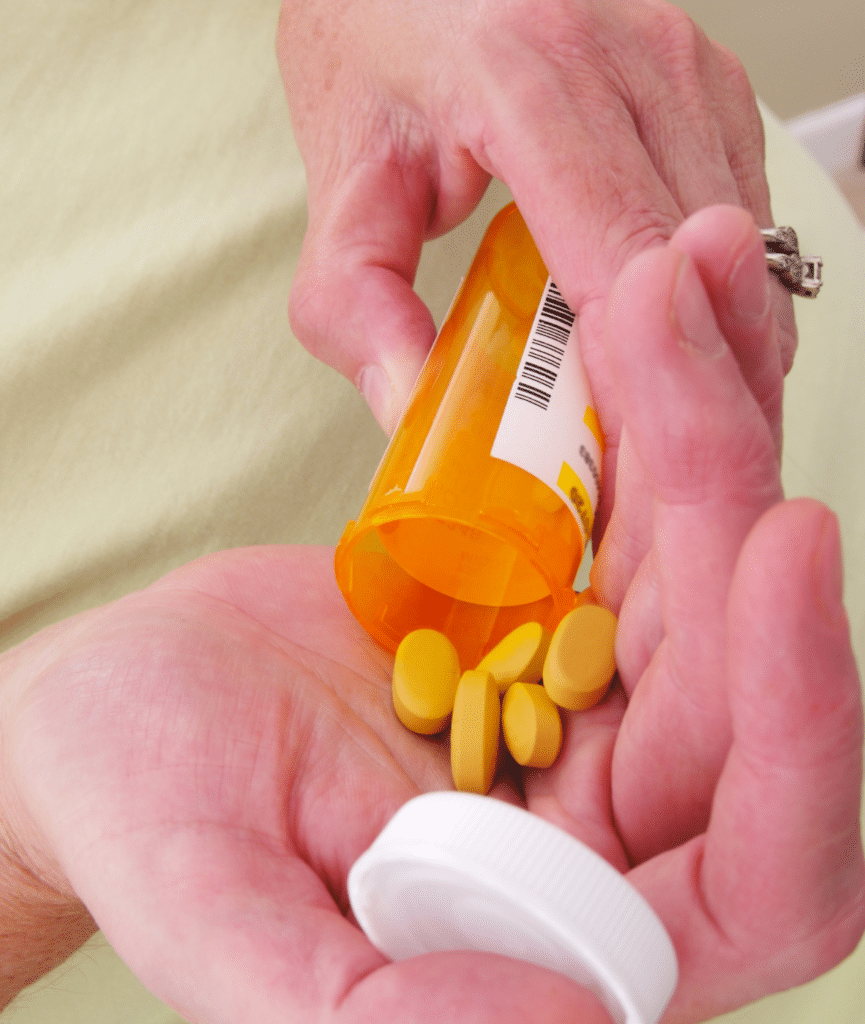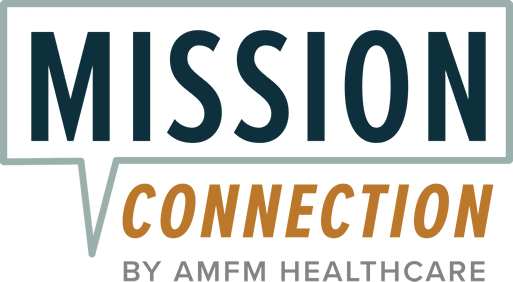The Complete Guide to Vyvanse: Uses, Side Effects, and Natural Alternatives

According to the Centers for Disease Control and Prevention, around 6% of adults in the U.S. have been diagnosed with ADHD.¹ Yet this statistic excludes adults who have never been diagnosed.
Many people only get diagnosed with ADHD later in life, after years of wondering why they feel overwhelmed or disorganized. They may wonder why their focus slips, routines fall apart, or tasks pile up faster than they can be managed.
An adult ADHD diagnosis can bring relief, but it often also brings up a new set of questions. For instance, what does treatment look like? What might actually help improve focus? For a lot of people, this conversation includes the option of medication.
Vyvanse is one of the stimulant medication options available for ADHD treatment. If you’ve been prescribed Vyvanse or are starting to consider it as a treatment option, a mental health professional can guide you through any concerns. This page also works as a useful guide, talking through…
- What Vyvanse is prescribed for
- Expected side effects when taking Vyvanse
- Vyvanse dosages
- How to stop Vyvanse safely
- How Vyvanse compares to Adderall
- Natural alternatives to Vyvanse
- Where to get Vyvanse and mental health help

What Is Vyvanse Used For?
People are often surprised to hear that Vyvanse is used for both ADHD and binge eating disorder.² On the surface, those conditions may seem unrelated. But under the surface, they can share a similarity. Both involve a kind of mental restlessness, or a feeling like it’s hard to pause before acting. Yet studies show that stimulants can improve decision-making.³
Vyvanse isn’t like flipping a switch to improve impulse control. Instead, it tends to soften the mental noise. For example, it helps some people focus and creates enough space between thoughts and actions to make healthy choices. Whether this means getting through a workday or resisting a binge, the goal is usually the same: a little more stability and less overwhelm.
Let’s take a closer look at how Vyvanse can benefit people with ADHD and binge eating disorder.
Vyvanse for Adults with ADHD
ADHD can be hard to pinpoint in adulthood. Some people lose focus in conversation. Others might struggle to complete tasks, even ones they care about. For adults navigating these challenges, Vyvanse may offer steady support.
Vyvanse works by increasing certain chemical messengers in the brain. These messengers, dopamine and norepinephrine, are both involved in attention and motivation. When there are more balanced levels of these chemicals, it often becomes easier to stay organized, resist distractions, and follow through.⁴
Yet Vyvanse doesn’t act right away; it needs to be processed by the body first. This slower activation helps it work more evenly throughout the day, rather than in quick bursts. Many find this makes it easier to stay grounded, especially during long work hours or back-to-back responsibilities.
Vyvanse for Binge Eating
Binge eating disorder involves more than just overeating. For many, it’s a cycle that involves intense urges, a feeling of losing control, and distress that follows. Vyvanse is currently the only FDA-approved medication for treating moderate to severe BED in adults.
Vyvanse doesn’t break the BED pattern overnight, but it can help reduce the intensity of the urges that drive it. By increasing dopamine and norepinephrine (two chemicals that help regulate impulse and reward), Vyvanse can shift how the brain responds during impulsive moments. For instance, some people find there’s more time to pause and choose differently.
However, treatment works best when it’s not just about the medication. Vyvanse can be one part of a broader plan – one that includes therapy, nutrition support, and tools that tap into the emotional side of binge eating. On its own, Vyvanse may ease symptoms. Yet combined with therapeutic care, it can help make long-term change possible.
Vyvanse Side Effects
Most medications come with side effects, and Vyvanse is no exception. Some people notice changes right away, including loss of appetite, trouble sleeping, or feeling more wired than usual. These Vyvanse side effects often settle down after a few days, but not always.
Everyone reacts differently to medication. The same dose that works well for one person might feel too strong or too weak for someone else. Additionally, factors like body weight, metabolism, and even time of day can all affect how the medication feels.
The most common Vyvanse side effects include:⁵
- Dry mouth
- Restlessness
- Irritability
- Decreased appetite
- Insomnia
- Nausea
- Diarrhea
- Jitters
- Elevated heart rate
Some side effects are physical, while others are more emotional or mental. Tracking changes, especially in the first few weeks, can help you and your provider make adjustments early.
The Risks of Using Vyvanse Long-Term
Most people who take Vyvanse long-term do well with it. But like any ongoing treatment, it’s helpful to know what effects might show up over time – especially with daily use.
Some potential long-term Vyvanse use concerns include:
- Sleep disruptions, such as trouble falling or staying asleep
- Appetite changes, especially reduced hunger during the day
- Mood shifts, including occasional irritability or emotional blunting
- Elevated blood pressure or heart rate, particularly in those with cardiovascular risks
- Diminished effectiveness, where the same dose feels less helpful over time
Checking in with your provider regularly can help catch these issues early. A small adjustment in timing, dosage, or routine is often enough to keep things working well.
Vyvanse and Anxiety
One of the more common concerns people bring up with Vyvanse is anxiety. For some, Vyvanse and anxiety go hand in hand as the stimulant effect feels like nervous energy with faster thoughts, tight shoulders, or a sense of internal pressure.
But for others, especially those whose anxiety stems from feeling scattered or constantly behind, the medication can bring relief. When focus improves, stress and anxious thoughts sometimes ease too.
There’s no one-size-fits-all answer to medication. If anxiety symptoms show up or get worse, it’s worth paying attention. Sometimes the timing of the dose needs to change. Sometimes it’s the dose itself. And sometimes, a different medication may be a better fit.
What Cancels Out the Effects of Vyvanse?
Vyvanse is meant to provide steady support throughout the day. But now and then, people notice it isn’t working the way it used to. Sometimes it feels too subtle. Other times, it seems to wear off too soon. This doesn’t always mean the prescription needs to change, but some adjustments may need to be made.
One adjustment that can be made is when it’s taken. If Vyvanse is taken after a large or high-fat meal, it may take longer to absorb.⁶ The effect might still be there, but may be slower to show up or inconsistent. Additionally, some supplements and medications can also interfere with Vyvanse’s effects, especially those that affect stomach acid, like antacids.
Sleep and hydration are also important. If someone’s stressed, run down, or not sleeping well, it can be harder to feel the medication working. Before making changes to your dose, it’s worth stepping back and looking at your daily routine with the guidance of your mental health care team. Sometimes, a small tweak in timing or habit can make a big difference.
Vyvanse Dosage Guide
Each person taking the medication will have a unique Vyvanse dosage guide based on their needs. Providers usually start with a low dose and increase slowly to find the right balance between symptom relief and side effects.
In general, a typical starting dose of Vyvanse is 30 milligrams per day, taken in the morning. From there, it can be uptitrated to a maximum of 70 milligrams per day, raised weekly in increments of 10-20 milligrams.⁷ Vyvanse is also available in multiple strengths, ranging from 10 mg to 70 mg.
Everyone responds differently to Vyvanse, so what works well for one person might be too strong or too mild for someone else. Titrating slowly helps reduce the risk of overstimulation or unwanted side effects.
How Fast Does Vyvanse Work?
How fast Vyvanse works usually takes somewhere between one and two hours. Some people feel it sooner – others, a little later. It can depend on how fast your body processes medication, or whether you’ve eaten recently.⁸
The slow start is intentional. It gives the medication a more gradual build, which can make it feel smoother overall. For instance, people who are sensitive to medications often prefer to ease into treatment with Vyvanse.
How Long Does Vyvanse Last?
Vyvanse is designed to last most of the day, usually between 10 to 14 hours. However, this duration can vary depending on things like metabolism, daily habits, and even other prescriptions that can affect how long it stays active.
Some people describe a “clear” point when the effects wear off. Others just notice focus slipping gradually. If Vyvanse’s effects end too soon or keep you up too late, you might not need a new medication – just a change in the timing of your dose.
Stopping Vyvanse Safely
Deciding to stop Vyvanse is something to consider carefully, not quickly. Even though the medication isn’t considered physically addictive, the brain still adjusts to having it around. Therefore, taking it away too fast can leave some people feeling mentally, emotionally, or physically off balance.
If you’re thinking about stopping Vyvanse safely, it helps to plan ahead. A slow, thoughtful process, ideally guided by your mental healthcare team, gives your system time to recalibrate without added stress.
Tapering Off Vyvanse
Not everyone needs a formal taper with Vyvanse. But for people on higher doses, or those who’ve been using it for a while, reducing it gradually can make a big difference.
Without tapering off Vyvanse, some people might notice a drop in focus or energy – especially if they stop suddenly. Others may feel emotionally flat or irritable. Tapering gives your body space to shift, one step at a time. There’s no universal schedule; it depends on what works for you and your mental healthcare team’s recommendations based on how you’ve responded to the medication.
Vyvanse Withdrawal Symptoms
If Vyvanse withdrawal happens, it’s usually short-term, but it can still feel uncomfortable and intense. Yet knowing what to expect helps most people manage symptoms and move through them with less worry.
Some Vyvanse withdrawal symptoms that can show up include: ⁹
- Fatigue or feelings of being “drained”
- Brain fog or difficulty focusing
- Irritability, restlessness, or low mood
- Bigger appetite than usual
- Trouble falling or staying asleep
- A general “crash” feeling, especially late in the day
These symptoms tend to pass, but if they’re uncomfortable or overwhelming, your healthcare provider can help adjust the pace of tapering or offer support while your body recalibrates.
Vyvanse vs Adderall
Both Vyvanse and Adderall are stimulant medications used to manage ADHD. They increase dopamine and norepinephrine, two brain chemicals tied to focus and impulse control. But how they work in the body – and how they feel – can vary from person to person.
When comparing Vyvanse vs Adderall, you’ll find that Adderall is made of mixed amphetamine salts and tends to take effect fairly quickly. It comes in immediate-release and extended-release forms, so the timing can be adjusted depending on when support is needed most.
Vyvanse works differently. It’s a prodrug, which means it has to be broken down by the body before it becomes active. This extra step slows things down. For many people, this results in a more gradual onset and a longer window of relief, often up to 14 hours.
Neither medication is automatically better than the other. Some people respond well to Adderall and feel overstimulated on Vyvanse. Yet others might have the opposite experience. What matters most is how each option fits with your body, your schedule, and your overall goals for treatment.
What Is a Natural Replacement for Vyvanse?
Not everyone wants to stay on medication long-term. Some people tolerate Vyvanse well, but others may wonder if there’s a way to manage symptoms without it. This is where the idea of natural alternatives to Vyvanse often enters the picture.
There are no over-the-counter natural alternatives to Vyvanse that are expected to work quite like a stimulant. But there are small steps that can be taken that may help with focus, mood, and energy. No single lifestyle change is likely to change everything, but layered together, they can add up. Keep in mind that you should never replace your medication without first discussing it with your mental healthcare provider.
Examples of natural replacements for Vyvanse include:
- Exercise, especially anything that gets your heart rate up, can improve attention and mood
- Omega-3s may support cognitive function over time and are often taken as supplements¹⁰
- Stable routines, like regular meals, good sleep, and breaks throughout the day, can help with mental clarity
- Mindfulness, even in small doses, can reduce impulsivity and improve emotional regulation
- Cognitive Behavioral Therapy (CBT) or other behavioral strategies can build coping skills that support attention, focus, and control
While these tools could be enough for some, they may not be enough of an alternative to Vyvanse by themselves. However, many people find benefits in combining them with medication.
Reach Out to Mission Connection for Vyvanse and Mental Health Guidance
If you’re starting Vyvanse, adjusting to a new dose, or exploring whether it’s the right fit, Mission Connection is here to help you think it through with informed and grounded support.
Our team looks at more than symptoms. We take into account your routines, goals, and the care options that are practical and sustainable for your everyday life.
To learn more about ADHD treatment or to speak with a clinician, contact us today to find out how Mission Connection can help. We’re here to help you take the next step – at a pace that makes sense for you.

References
- Staley, B. S., Robinson, L. R., Claussen, A. H., Katz, S. M., Danielson, M. L., Summers, A. D., Farr, S. L., Blumberg, S. J., & Tinker, S. C. (2024). Attention-deficit/hyperactivity disorder diagnosis, treatment, and telehealth use in adults—National Center for Health Statistics Rapid Surveys System, United States, October–November 2023. Morbidity and Mortality Weekly Report, 73(40), 890–895. https://www.cdc.gov/mmwr/volumes/73/wr/mm7340a1.htm
- Heo, Y.-A., & Duggan, S. T. (2017). Lisdexamfetamine: A review in binge eating disorder. CNS Drugs, 31(11), 1015–1022. https://pubmed.ncbi.nlm.nih.gov/29134566/
- Bagot, K. S., & Kaminer, Y. (2014). Efficacy of stimulants for cognitive enhancement in non-attention deficit hyperactivity disorder youth: A systematic review. Addiction, 109(4), 547–557. https://pmc.ncbi.nlm.nih.gov/articles/PMC4471173/
- Quintero, J., Gutiérrez-Casares, J. R., & Álamo, C. (2022). Molecular characterisation of the mechanism of action of stimulant drugs lisdexamfetamine and methylphenidate on ADHD neurobiology: A review. Neurology and Therapy, 11(4), 1489–1517. https://pmc.ncbi.nlm.nih.gov/articles/PMC9588136/
- Goodman, D. W. (2010). Lisdexamfetamine dimesylate (Vyvanse), a prodrug stimulant for attention-deficit/hyperactivity disorder. P & T: A Peer-Reviewed Journal for Formulary Management, 35(5), 273–287. https://pmc.ncbi.nlm.nih.gov/articles/PMC2873712/
- Chris, A. (2018, October 1). Ask the editor: Three significant food interactions with ADHD medications. The Carlat Report. https://www.thecarlatreport.com/articles/2793-ask-the-editor-three-significant-food-interactions-with-adhd-medications
- Madaan, V., Kolli, V., Bestha, D. P., & Shah, M. J. (2013). Update on optimal use of lisdexamfetamine in the treatment of ADHD. Neuropsychiatric Disease and Treatment, 9, 977–983. https://pmc.ncbi.nlm.nih.gov/articles/PMC3726586/
- Sharman, J., & Pennick, M. (2014). Lisdexamfetamine prodrug activation by peptidase-mediated hydrolysis in the cytosol of red blood cells. Neuropsychiatric Disease and Treatment, 10, 2275–2280. https://pmc.ncbi.nlm.nih.gov/articles/PMC4257105/
- Robertson, B., Wu, J., Fant, R. V., Schnoll, S. H., & McElroy, S. L. (2020). Assessment of amphetamine withdrawal symptoms of lisdexamfetamine dimesylate treatment for adults with binge-eating disorder. The Primary Care Companion for CNS Disorders, 22(2). https://pubmed.ncbi.nlm.nih.gov/32237290/
- Dighriri, I. M., Alsubaie, A. M., Hakami, F. M., Hamithi, D. M., Alshekh, M. M., Khobrani, F. A., Dalak, F. E., Hakami, A. A., Alsueaadi, E. H., Alsaawi, L. S., Alshammari, S. F., Alqahtani, A. S., Alawi, I. A., Aljuaid, A. A., & Tawhari, M. Q. (2022). Effects of omega-3 polyunsaturated fatty acids on brain functions: A systematic review. Cureus, 14(10), e30091. https://pmc.ncbi.nlm.nih.gov/articles/PMC9641984/
